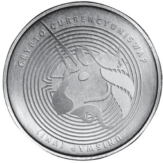Uniswap is a protocol on Ethereum for swapping ERC20 tokens without the need for buyers and sellers to create demand. It eliminates the traditional necessity of a central facilitator by employing liquidity pools instead. Uniswap was launched in November 2018, and it is one of the flagships of the Decentralized Finance (DeFi) space.
Origin and Development
Uniswap was conceived by Hayden Adams, who was inspired by an Ethereum white paper describing the benefits of a decentralized exchange protocol. Vitalik Buterin, the co-founder of Ethereum, mentored Adams, who then wrote the protocol.
The first version of Uniswap, known as Uniswap V1, was launched in November 2018. The second version, Uniswap V2, was launched in May 2020, and it brought about numerous features including ERC20/ERC20 pairs, price oracles, and flash swaps. Uniswap V3 was launched in May 2021, with several upgrades including concentrated liquidity, multiple fee tiers, and a license to limit the use of its code for a period of up to two years.
How Uniswap Works
Uniswap’s primary feature is as a decentralized exchange where users can swap and exchange a wide variety of different crypto assets without a third-party intermediary. Unlike traditional exchanges, Uniswap’s decentralized protocol makes it easy for anyone to list their digital asset with minimal requirements (with the exception of needing to be an ERC-20 token), which accounts for the exceedingly wide collection of tokens available. Virtually any trading pair involving ERC-20 tokens is available on Uniswap. Uniswap incentivizes its users to maintain the liquidity of the exchange, providing portions of the transaction fees and newly minted UNI tokens to those who participate.
Uniswap has devised a protocol that relies on liquidity providers creating liquidity pools which then provide liquidity across the platform, allowing users to seamlessly swap between essentially any ERC-20 tokens – all without the need for an order book.
Since the Uniswap protocol is completely decentralized, there is no real listing process like a centralized exchange has. Any ERC-20 token can be launched for trading on the Uniswap platform as long as there is a liquidity pool available. Because of this, Uniswap does not charge any listing fees, making it an essential resource for new or smaller ERC-20 projects.
To trade on Uniswap the user attaches their Ethereum wallet and selects their chosen ERC-20 token in their wallet that they would like to trade, as well as the ERC-20 token that they would like to trade for. When the user selects the volume of their token that they want to swap, Uniswap automatically converts that amount into the corresponding amount in the token they are trading for based on the token price and exchange rate.
Uniswap leverages a formula that automatically sets and balances the value depending on how much demand there is. Instead of using an order book like traditional exchange, it uses a model called the Constant Product Market Maker, which creates a liquidity pool that is filled with funds from liquidity providers.
For each ERC20/ERC20 pair, Uniswap creates a liquidity pool. These pools are filled by liquidity providers who deposit an equivalent value of each underlying token in return for liquidity provider (LP) tokens. These LP tokens can be staked to earn rewards or used for yield farming. Traders can then trade against these liquidity pools. Prices are set according to a deterministic algorithm known as Automated Market Making (AMM).
“Uniswap is based on a set of smart contracts that implement an automated market maker (AMM) model.”
An AMM is a system that uses a mathematical formula to determine the price of an asset based on its supply and demand, rather than relying on an order book or a central authority.
Uniswap uses a constant product formula: x * y = k, where x and y are the reserves of two tokens in a pair, and k is a constant value. This means that the product of the reserves always remains the same, and the price of one token in terms of another is determined by the ratio of the reserves.
Uniswap allows anyone to create a liquidity pool for any pair of ERC-20 tokens by depositing an equal value of both tokens into the smart contract. The liquidity provider receives a proportional share of the pool’s tokens, called liquidity tokens, which represent their ownership of the pool.
Uniswap allows anyone to swap any amount of one token for another by interacting with the smart contract. The swapper pays a 0.3% fee, which is added to the pool’s reserves. The swap also changes the ratio of the reserves, which affects the price of the tokens according to the constant product formula.
Uniswap allows anyone to withdraw their liquidity from a pool by burning their liquidity tokens and receiving their share of the underlying tokens. The liquidity provider also receives a portion of the accumulated fees in proportion to their stake in the pool.
Uniswap Governance
The UNI token governs Uniswap. This governance token was launched in September 2020, with 1 billion UNI tokens issued at genesis and a declining inflation rate. Token holders can vote on various decisions related to the protocol, such as determining fee structures or upgrading the protocol.
Uniswap is governed by a decentralized autonomous organization (DAO) that consists of UNI token holders. UNI is the governance token of Uniswap, which was launched in September 2020 with an airdrop to anyone who had used the protocol before September 1.
UNI holders have the power to propose and vote on changes to various parameters and features of Uniswap, such as the fee structure, the supported token pairs, the oracle system, etc. These changes are implemented through smart contract upgrades or deployments. The holders of UNI also have the responsibility to oversee and fund the development and maintenance of Uniswap, as well as to support its community and ecosystem. They can delegate their voting power to other entities or individuals who represent their interests or expertise.
UNI holders can also participate in various incentive programs that reward them for providing liquidity, trading, or contributing to Uniswap in other ways.
Features of Uniswap
Some of the features of Uniswap are:
- It provides a permissionless and censorship-resistant platform for exchanging any ERC-20 token without intermediaries or restrictions.
- It enables users to access the benefits of decentralized finance (DeFi), such as transparency, security, and innovation, without exposing themselves to the risks of centralized platforms or custodians.

- It empowers users to have more control and flexibility over their assets, as they can swap, provide liquidity, earn fees, or withdraw at any time according to their needs and preferences.
- It supports the development and adoption of the Ethereum ecosystem and the broader DeFi movement, as it can be integrated with various protocols and applications that offer new possibilities and opportunities for users.
UNI Token Use Cases
Uniswap (UNI) has a current token supply of 1,000,000,000 UNI. All of these UNI tokens will become available over the course of four years. After four years, when all of these tokens have been distributed, Uniswap will introduce an inflation rate of 2% per year in order to maintain network participation.
60% of the 1 billion UNI token supply was airdropped to Uniswap community members (ETH addresses that had actively traded with the Uniswap protocol). The remaining 40% will be distributed to team members, investors, and advisors according to a 4-year plan.
Governance is the primary use case for the UNI token. Uniswap is a decentralized autonomous organization (DAO). This means that community members are able to participate in and vote for decisions related to how the protocol will expand and change over time. Holding a certain amount of UNI tokens, the protocols native governance token, is the basis to qualify to participate in such votes.
a) Swapping Tokens: Uniswap allows users to swap one ERC20 token for another. This is the most basic function of Uniswap and serves as a key service for users looking to trade tokens. Users can swap any ERC-20 token for another with low fees and high efficiency. This can be useful for trading, investing, speculating, or accessing various DeFi services.
b) Providing Liquidity: Users can contribute their tokens to liquidity pools and earn rewards. As a liquidity provider, you will earn fees from the trading activity that happens in your pool.
Users can provide liquidity for any ERC-20 token pair and earn fees from every swap that occurs in the pool. This can be useful for earning passive income, diversifying portfolios, or supporting new projects.
Shariah Opinion
The UNI token can be considered Shariah compliant. Its primary use case is governance of an exchange platform. UNI tokens do not hold equity in the underlying exchange, and therefore token holders cannot be responsible for the tokens that are traded on Uniswap. The holders of UNI are responsible to ensure that their governance and voting aligns with Shariah principles.
Conclusion
Based on and subject to the foregoing information, and for the purposes of this conclusion, nothing has come to our attention that causes us to believe that UNI is in breach of Sharia* principles and rulings as adopted by the scholars conducting this research.
*Attention is drawn to the term ‘Sharia’ and ‘Sharia compliant’ and its interpretation thereof as expressed in the following link https://shariyah.net/glossary/



